The thyroid is one of the most important glands in the body. It produces hormones thyroxine (T4), triiodothyronine (T3) and Thyroid Stimulating Hormone (TSH), that influence every cell, tissue and organ in your body. Your thyroid regulates your metabolism—the rate at which your body produces energy from nutrients and oxygen—and in turn affects body functions, such as your energy levels and heart rate, as well as your fertility and reproductive health. Since the thyroid gland is connected to gastrointestinal function, adrenal hormone metabolism, blood-sugar levels, stomach acid production, brain chemistry changes, and liver detoxification, its dysfunction can contribute to many clinical manifestations in your body such as chronic weight gain, mental and physical fatigue, and weakened immune and digestive function.
More than 12 percent of the U.S. population will develop a thyroid condition during their lifetime. While prescription thyroid hormones may bring levels in the blood into a normal range, the hormone replacement doesn’t address what caused the thyroid to slow down in the first place. The symptoms creating the hypothyroid symptoms more likely call for sustained lifestyle changes that support hormonal balance.
Yoga has been shown to decrease oxidative stress, which signals an imbalance in free radicals and is linked to disease. It has also been shown to increase thyroid activity.
Related: Why Doctors Recommend Yoga for Breast Cancer Patients
Inspired by the practices of my teachers, my studies in functional medicine, yoga, and holistic health, and most importantly, my own healing journey, I have woven together what I found to be the most beneficial, most powerful poses and techniques to nourish and support your thyroid. When practiced consistently, these specific yoga poses and breathing techniques work by clearing the stagnation around our organs, resetting the balance of our endocrine and lymphatic system, which ultimately supports overall endocrine and glandular health—regardless of whether the practitioner is experiencing overactive or underactive thyroid symptoms or had the thyroid removed.
This sequence may be done in as little as 15 minutes, but a longer seated meditation is always recommended.
Thyroid Breathing Exercise (3 minutes)
This particular breathing exercise increases circulation and expands the capacity of the lungs. According to Kundalini Yoga texts, this specific Pranayama, or breath technique, promotes increased circulation and stimulates thyroid and parathyroid secretions, which aid in reducing stagnation and inflammation.
Instructions
At the level of your throat, place the right palm facing the left palm and clasp fingers together, creating a tension on the palms almost as if pulling them apart.
Every inhale, twist torso to the left. Each twist to the left sends circulation and blood flow to the heart, which is located on the left side of the body. Every exhale, twist torso to the right. Each twist to the right promotes the detoxification of the liver, located on the right side of the body. After three minutes, sit silently with your eyes closed and breathe deeply, noticing the effect of this breathwork on your physical and energetic state.
Cat-Cow (3 minutes)
If you only have three minutes in the morning to dedicate to your yoga practice, this simple exercise is the one I recommend most to eliminate brain fog and fatigue, which are two of the most common symptoms of thyroid imbalances.
Why? The movement of cat-cow, known as spinal flexion, increases the circulation of the spinal fluid, which contributes to greater mental clarity, according to Kundalini Yoga, because all 26 vertebrae receive stimulation and all the energy centers receive a burst of energy.
Instructions:
Begin on hands and knees, with knees under hips and palms directly under the shoulders. As you inhale, press your chest forward past your upper arms and spread apart your sitting bones, making sure to keep your arms straight, shoulders and knees in position. Be sure to lengthen through the lumbar spine and broaden your shoulders as you press your breastbone forward.
Try to speed the movement up to a rapid and rhythmic pace to promote energy flow, which in turn presses out the stagnant energy and decreases inflammation, releasing blockages that have been stored in the organs and glandular system, according to Guru Jagat, founder of Ra Ma Institute of Applied Yogic Science and Technology in Venice.
Frog Lifts (3 minutes)
This exercise incorporates yoga asana (movement) and pranayama (breath work) to stimulate the glandular system and balance the metabolism.
Instructions:
As you inhale, squat down, balancing on the balls of your feet, heels touching and raised up. Place your fingertips on the ground between your legs and slightly in front, spine arched, and chin slightly lifted. 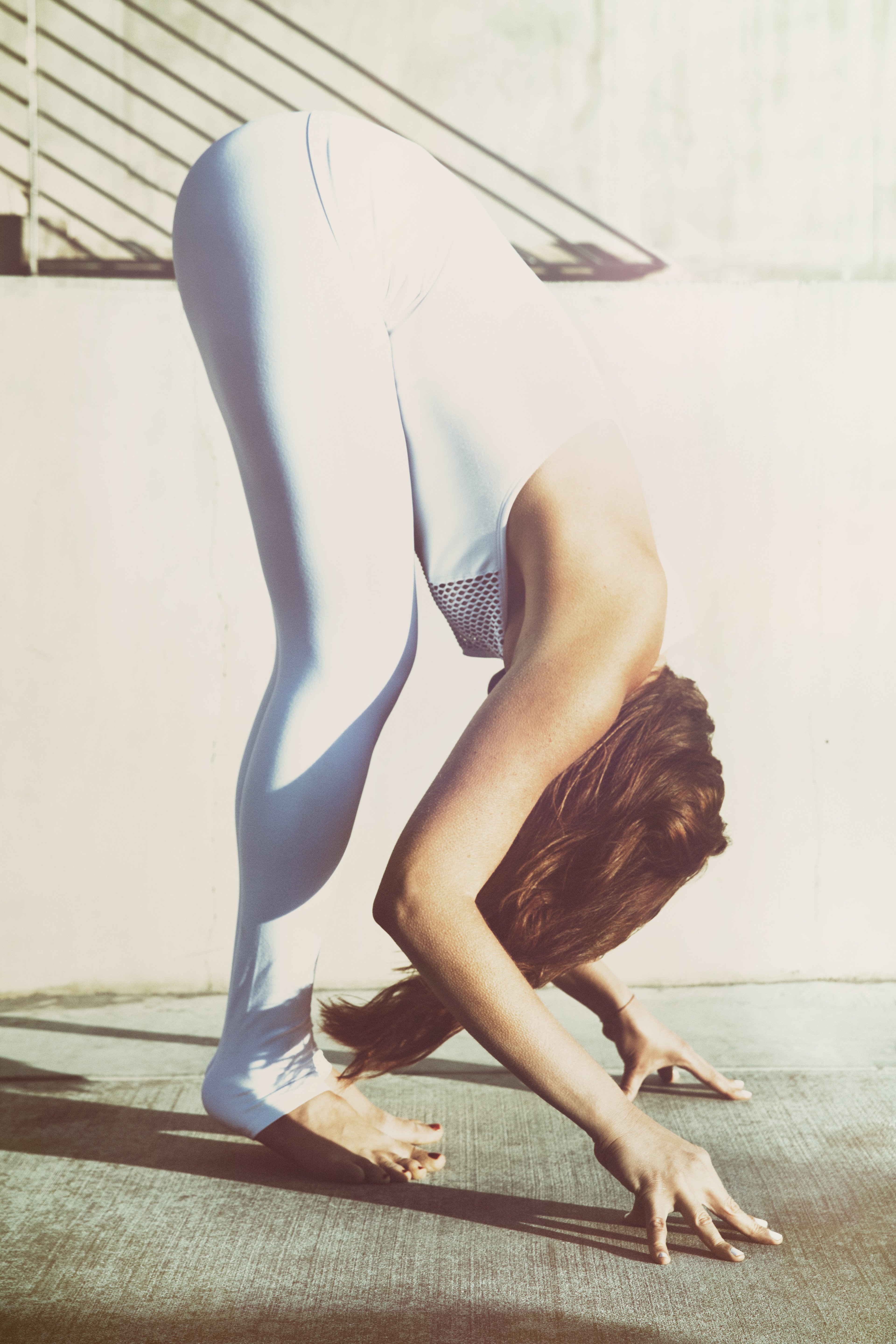
As you exhale, bow into your legs drawing the navel point inward as you straighten your legs, heels remain touching and lifted, and fingertips remain grounded. The movement is rapid.
Related: A Yoga Sequence to Develop Inner Strength
Chair Pose with Eagle Arm Variation (5 breaths)
This particular arm variation is one of the best ways to nourish your thyroid because you are creating space in the throat region, through the hook of the chin.
Each time you finish the pose, notice the warmth around the neck region. This powerful exercise strengthens the lower body while it flushes chronic stress and stagnation from your adrenals and activates your thyroid, according to Nevine Michaan, founder of Katonah Yoga in New York City.
Instructions
Take five deep breaths in Chair Pose, knees bent and seat back, with arms alongside ears, then return to Mountain Pose and ensure your feet are still set at inner hips width apart, toes facing straight forward.
Wrap left arm under right and lift the elbows up and out, tucking the chin into the elbow crease of upper arm, and breathe deeply into the back of the throat. Take five deep breaths here; repeat with the other arm on top.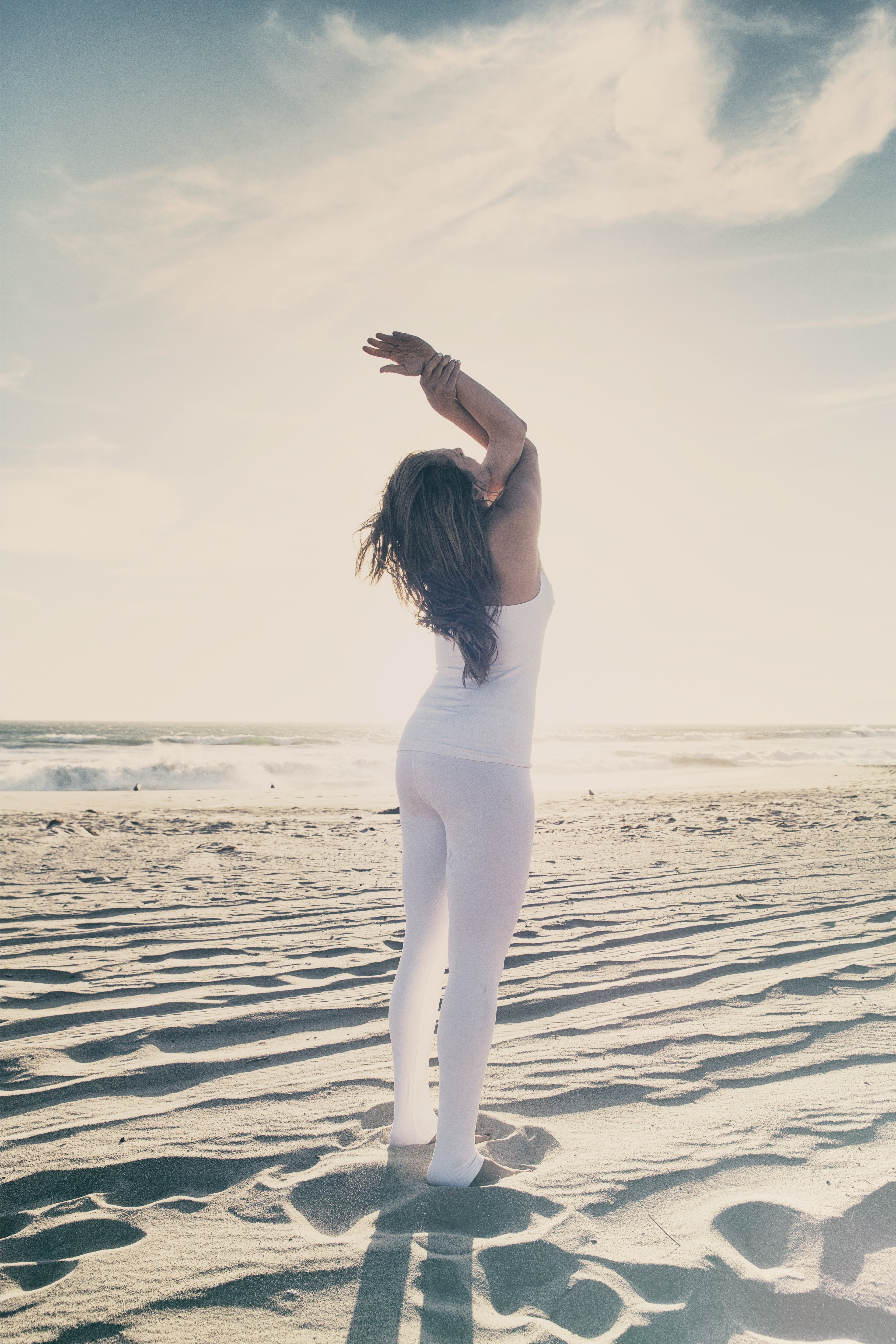
Keep sending your seat back while lifting your elbows out and up, as you move your shoulders down away from your ears. Swallow to stimulate release of any congestion around your throat. Try to keep your face relaxed as you take three deep breaths. Find comfort in the boundaries, and breathe space into the back of your throat. Then release your arms and pause in Mountain Pose, standing up tall with your arms alongside your body.
This pose may feel uncomfortable and tight at first. If your palms are not pressing together, that is okay. Just take a hold of the higher wrist and try to pull your wrist up as you lift your elbows. As you do this, squeeze your elbows and forearms together.
Eagle Pose to Warrior III
Certain biochemical imbalances in the brain can adversely affect the body and emotions, such as hormone imbalances and challenging afflictions such as anxiety, food cravings, and emotional eating. Balance sequences trigger the right and left sides of the brain, realign electrical circuitry, and restore biochemical balance in your body, according to the teachings of Kundalini Yoga.
The more you can stretch your lifted leg back and straighten at the knee in Warrior III, the more you work the kidney meridian. The kidney meridian, according to traditional Chinese medicine, runs up from a point on the bottom of the foot called “the bubbling well,” along the length of the inner leg along a line behind the liver meridian. After it crosses the hip crease it runs up the front of the body to the inside of the spleen meridian and along the body’s center line. When the leg is straight in Warrior III, the whole kidney meridian stretches, stimulating the movement of energy and stimulating the adrenal glands.
Instructions:
Find your way back into the Chair Pose with the eagle arm variation. Start with the right arm wrapped over the left. Sit lower as you spread apart your sitting bones and lengthen the elbows forward.
Begin to lift up onto the ball of the left foot and as you find your balance, wrap the left leg around the right as high up on the thighs as you can, either wrapping the left toes behind the right calf or resting the left toes on the floor if you find it difficult to wrap your leg twice. Squeeze your inner thighs and knees together as you reach your sitting bones back and apart, extending your elbows forward and up, again as if you could balance a cup of tea on your back.
Hold this pose for three breaths, sending breath into the thyroid.
Begin to slowly and gracefully unravel the legs and keep a slight bend in the right standing leg, and begin to extend the left leg straight behind the body, with the sole of the foot pressing against an imaginary wall behind you. You may also practice this pose standing at a wall and pressing your foot into a wall for balance. Try to keep your hips and lower back level as you extend your elbows forward in front of you, and press your standing foot down into the earth to find more lift in your right leg.
Find yourself calm and centered as you take three deep breaths here. Focus your gaze on a fixed point out ahead of you.
To come out of the pose, invite your lifted leg into the chest as you unravel the arms and slowly release your foot to the earth and your prayer to your heart. Pause here in Mountain Pose, standing at the front of the mat for a few breaths to bring compassion and kindness to the body before repeating on the second side.
Related: A Beginner’s Guide to Essential Sanskrit Mantras
Meditation
Sit for a moment in a cross-legged seat to reflect on how this practice has ignited your body with radiant health. Notice any shifts you have experienced in your physical and energetic body.
Imagine a bright blue beam of light projecting out of your thyroid, and as you breathe here, see the light getting stronger and more vivid.
Begin to repeat the following mantra to yourself:
Ra Ma Da Sa
This is the Siri Gairtri Mantra, the most popular healing mantra in Kundalini yoga. It holds within it eight sounds that stimulate the Kundalini flow within the central channel of the spine for healing. It brings balance into the core of our energetic body and floods it with new energy.
Yogi Bhajan, a spiritual teacher who introduced Kundalini yoga to the United States, says the sound “DA” in particular is the sound of your infinite awakening, at the crown of the head. Feel here the spinning and opening of a new consciousness, a new ability to heal.
Photos by Chloe Crespi
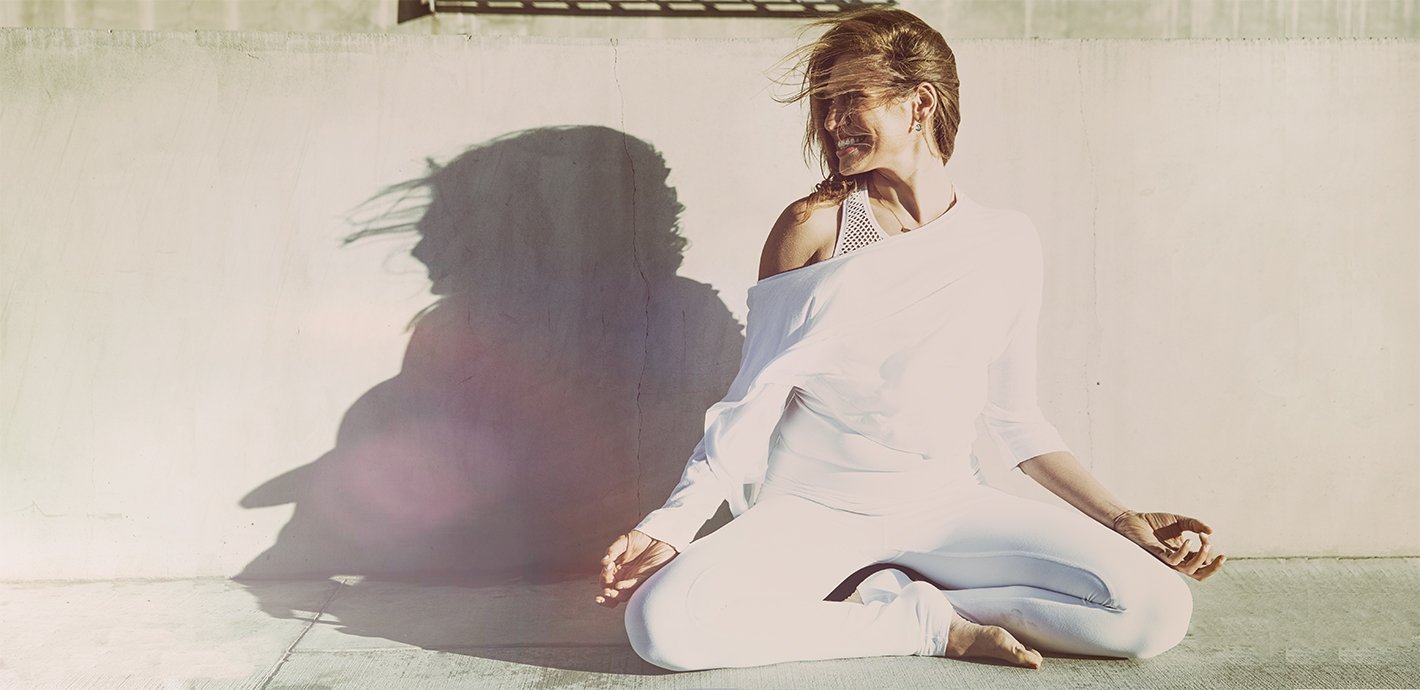






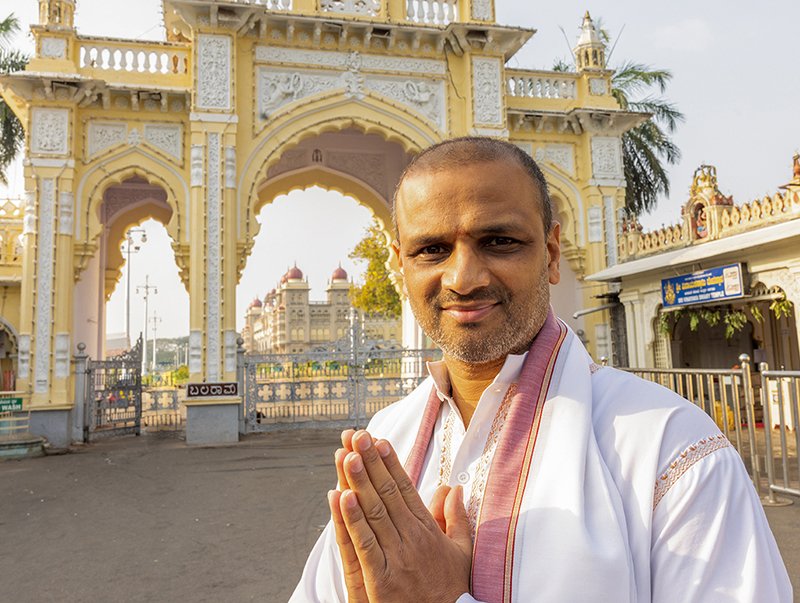

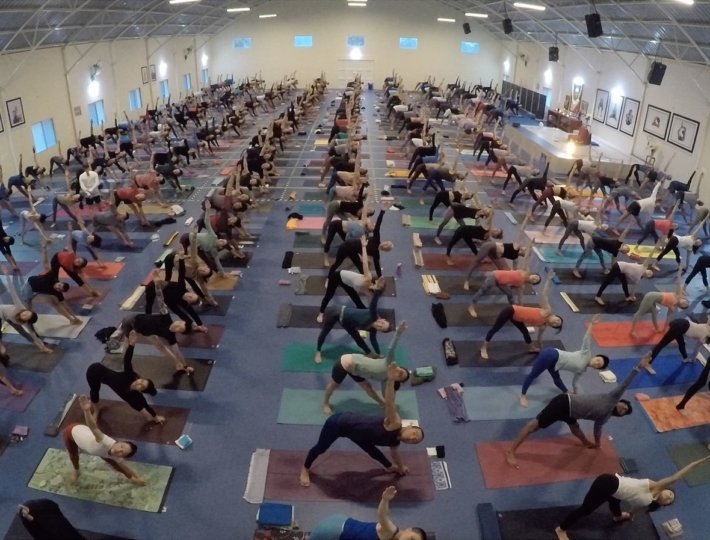



Comments (0)